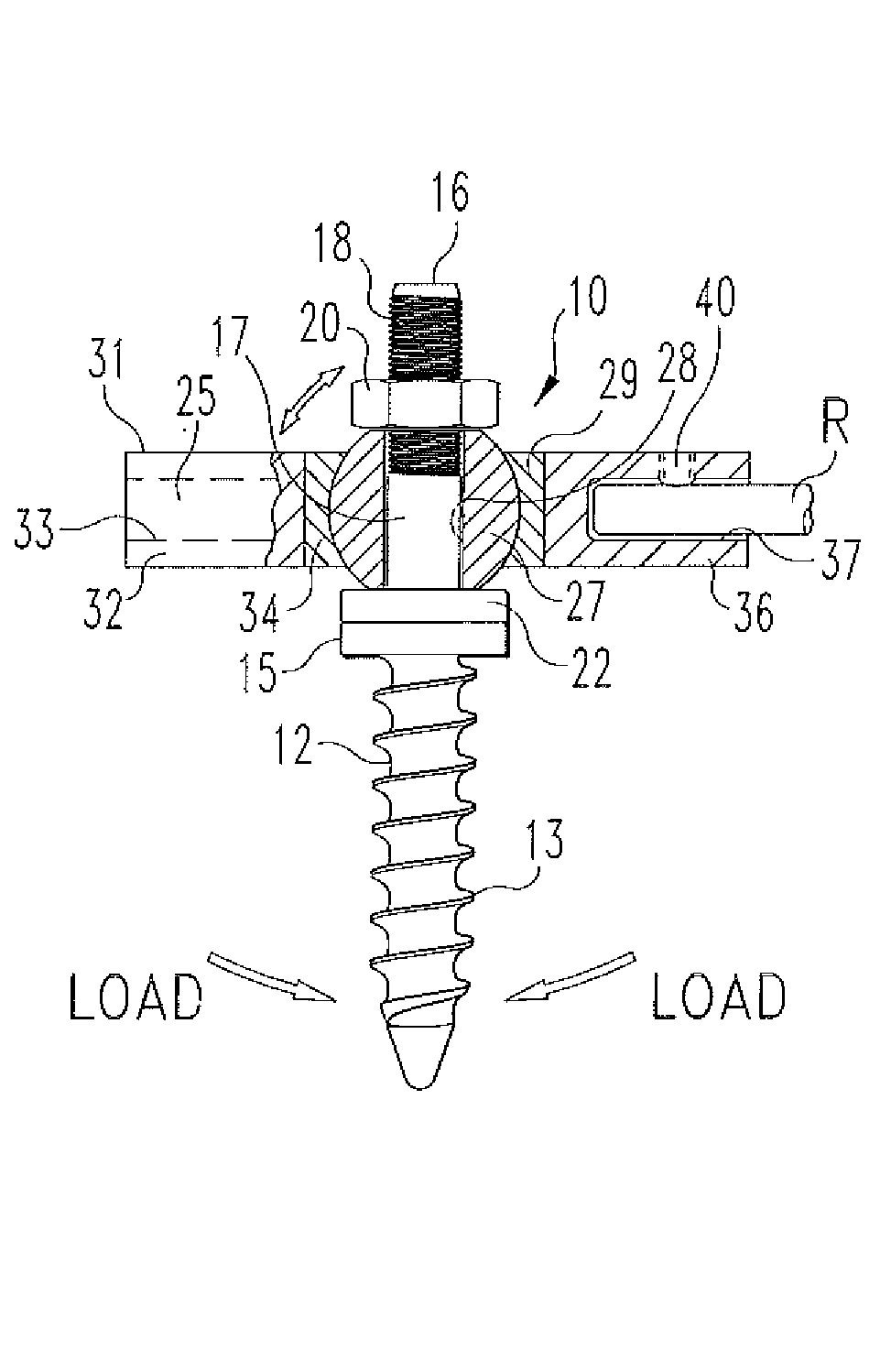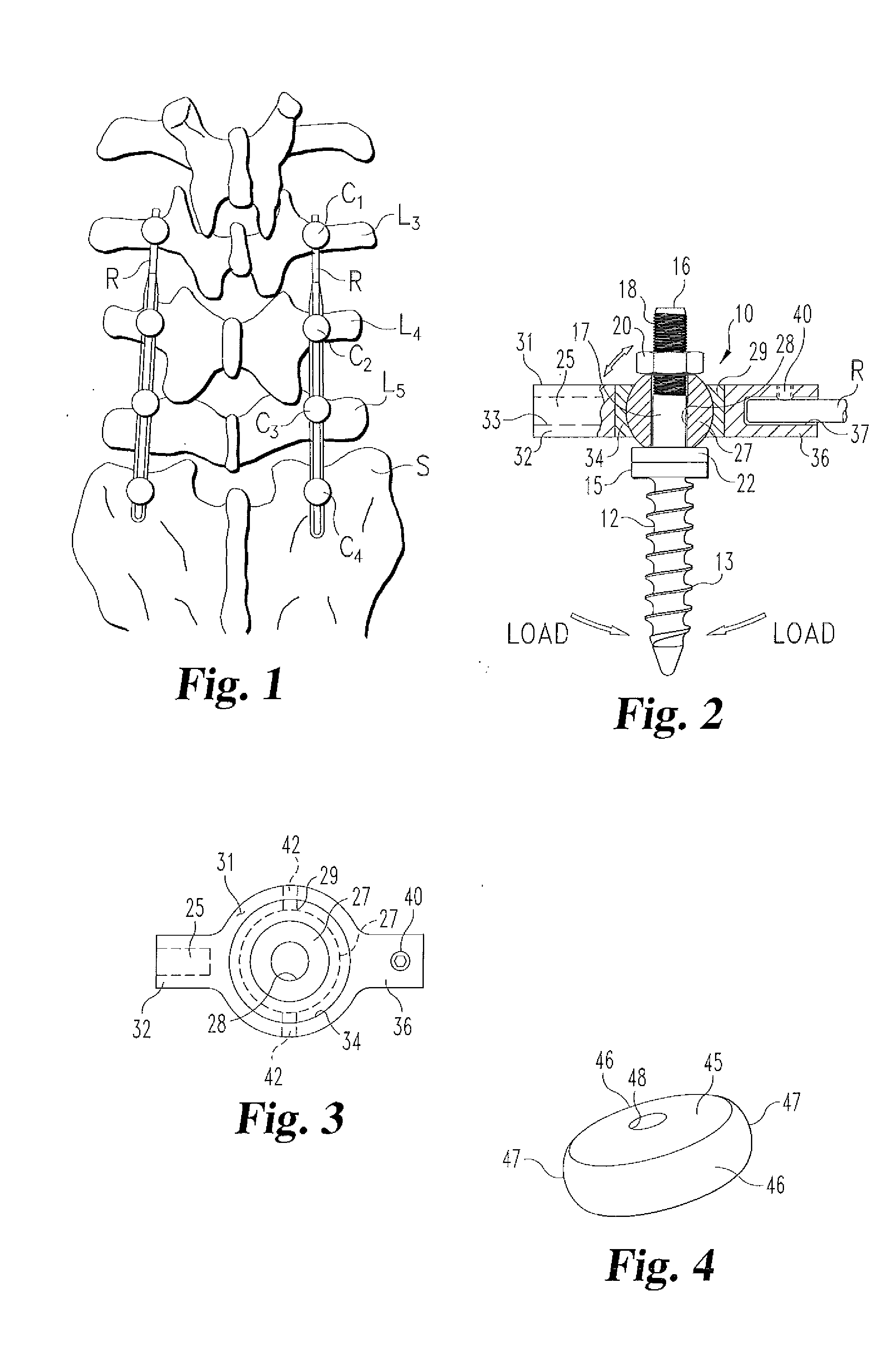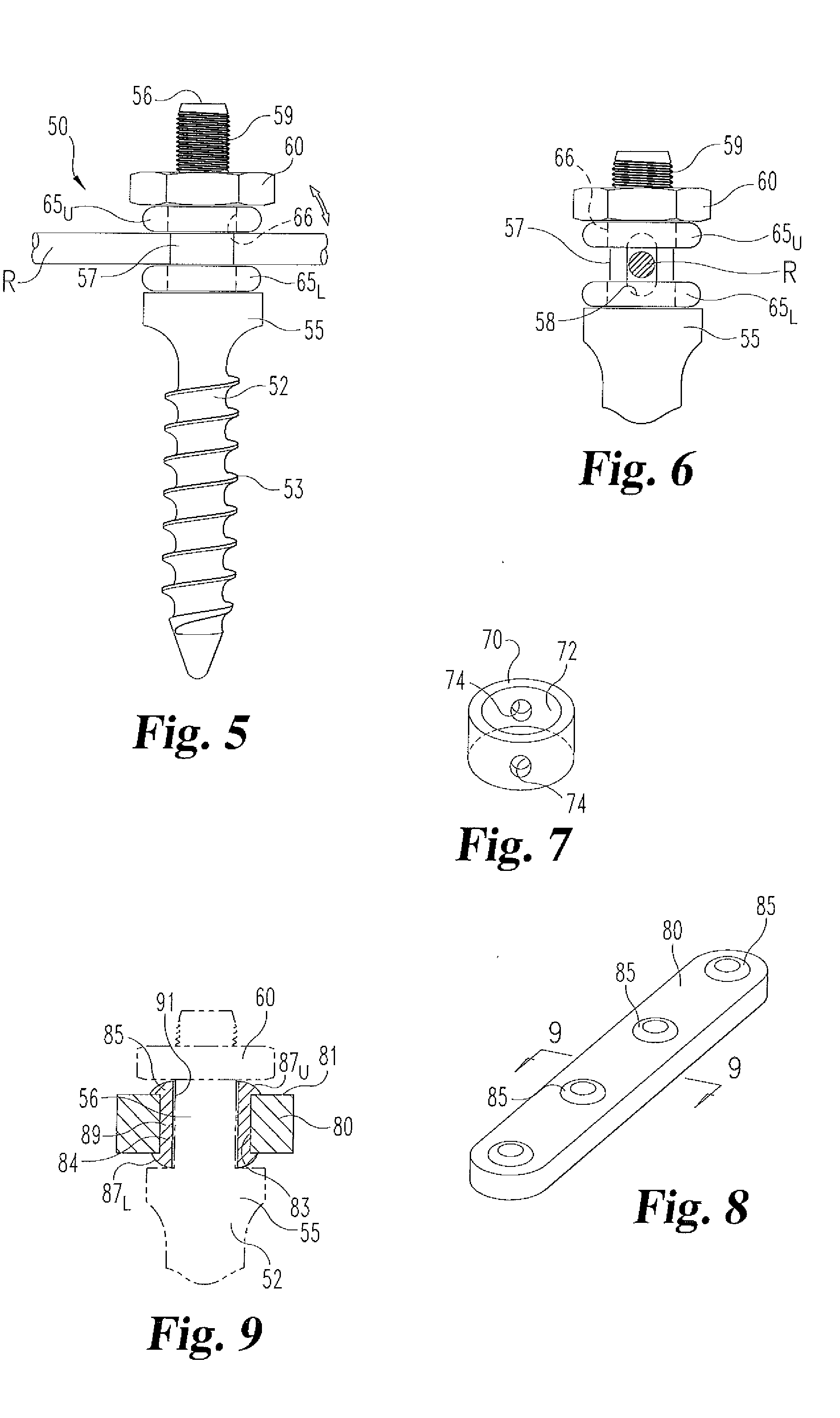Dynamic Spinal Stabilization System
a spinal stabilization and dynamic technology, applied in the field of spinal implant systems, can solve the problems of prior systems not being able to alter the stiffness of a segment in various loading modes, system inability to over-load the disc annulus, and limitations of spinal fusion
- Summary
- Abstract
- Description
- Claims
- Application Information
AI Technical Summary
Benefits of technology
Problems solved by technology
Method used
Image
Examples
Embodiment Construction
[0034]For the purposes of promoting an understanding of the principles of the invention, reference will now be made to the embodiments illustrated in the drawings and described in the following written specification. It is understood that no limitation to the scope of the invention is thereby intended. It is further understood that the present invention includes any alterations and modifications to the illustrated embodiments and includes further applications of the principles of the invention as would normally occur to one skilled in the art to which this invention pertains.
[0035]An exemplary spinal construct is depicted in FIG. 1. In this construct, a scaffolding is affixed to opposite sides of the spine. In the illustrated configuration, a pair of stabilization elements, in the form of spinal rods R, span from the L3 vertebra, across the L4 and L5 vertebrae and ending at the sacrum S. A series of connectors C1-C4 fasten the rod R to the vertebrae. The connectors in a typical stab...
PUM
 Login to View More
Login to View More Abstract
Description
Claims
Application Information
 Login to View More
Login to View More - R&D
- Intellectual Property
- Life Sciences
- Materials
- Tech Scout
- Unparalleled Data Quality
- Higher Quality Content
- 60% Fewer Hallucinations
Browse by: Latest US Patents, China's latest patents, Technical Efficacy Thesaurus, Application Domain, Technology Topic, Popular Technical Reports.
© 2025 PatSnap. All rights reserved.Legal|Privacy policy|Modern Slavery Act Transparency Statement|Sitemap|About US| Contact US: help@patsnap.com



